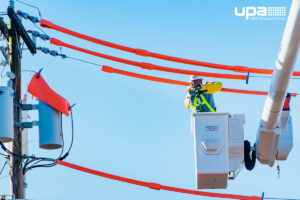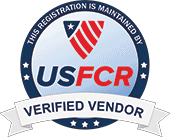The average number of car accidents in the U.S. each year is about 6 million. From fender benders to more serious crashes, many of these incidents result in considerable damage to cars, property, and adjacent vegetation. They also pose a serious threat to the utilities that enable our society to function. Think about how many times you’ve driven by an accident and noticed that a car had damaged a utility pole. Now think about how emergency and traffic personnel must work with the utility company on that repair.
The answer comes in the form of a traffic incident management system, also known as TIMS. The system relates to the process needed to detect, respond to, and clear traffic incidents. The goal is to restore the flow of traffic as quickly as possible. This ensures the safety of motorists and those impacted by the crash and any workers or emergency personnel who play a role in the aftermath.
How to use TIMS
When responding to an accident or performing utility repairs results in a change in the traffic pattern, workers must implement a temporary traffic control (TTC) zone as part of TIMS. Within every TTC, there are four distinct components. The “advance warning area” informs motorists about an upcoming work zone or incident. The “transition area” is the point at which motorists become redirected from the path they would normally take. The “activity area” is where the work occurs. The last is the “termination area,” where motorists can revert to normal traffic flow. A spot usually marked by a sign indicating work has ended. Utility companies should deploy several different strategies as part of TIMS and carefully consider the TTC, to keep workers safe.
Related: OSHA and Beyond: Keep Employees Safe in the Field
Helping Motorists
Warning signs are visual markers that unexpected traffic patterns are set to occur. Language on warning signs can vary, but “Be Prepared to Stop,” “Exit Closed,” “Detour,” and “Lane Closed” are examples of those that utilities will commonly use. But in addition to the words printed on the warning sign, placement of the sign is just as paramount for safety. These signs should be located where there are no obstructions and ahead of hills or curves.
Channelizing devices are meant to help motorists adapt to the new traffic pattern by gently guiding them. Cones, flares, arrow panels, and emergency-vehicle lights are examples of devices used for directional guidance. If working in concert with emergency personnel and using their lighting, always remember to disable forward-facing lighting that could reduce motorist visibility.
One other TIMS tactic involves parking a shadow vehicle up to 200 feet in advance of the work area. This vehicle serves as a cue or reminder to motorists that they are approaching workers or lane closures.
Why TIMS is important
It’s easy to say that traffic control in the event of an accident or an emergency is essential, but workers can remain in danger if the TIMS is not done correctly. In its TIMS report from 2012, the U.S. Fire Administration spelled out 10 of the most common factors in crashes that injure firefighters on the side of the road. Here are a few that also apply to utility workers.
-
Failure to build a proper TTC zone
In some cases, specialized training in designing and implementing an adequate TTC zone may not have occurred. Take the time to set up educational training with your employees on best practices for TTC creation. Emphasize the importance of doing it right.
-
Failure to wear safety equipment
All roadside workers should wear appropriate protective garments, including reflective highway safety vests to increase their visibility with motorists.
-
Failure to use appropriate lighting
Improperly placed warning lights or floodlights can be a distraction and limit motorists’ visibility, which can endanger workers.
Related: Storm Response Planning: Four Tips
In the United States, lawmakers have passed “Move Over” regulations in all 50 states (though not in Washington D.C.) to protect emergency personnel and roadside workers. When possible, motorists traveling on multi-lane roadways must merge lanes away from the shoulder where workers are. If not possible, the law requires that drivers significantly slow their speed below the posted limit.
While these laws contribute to keeping workers out of harm’s way, we can’t stress enough the importance of TIMS and the in-depth training on how best to use TTC zones for the safety of workers and motorists alike. If you’d like to, you can read more about tailgate meetings on our blog.
Related: Why Outsourcing Makes Sense
Interested in learning how Utility Partners of America might be able to help your utilities or energy co-op? Contact us today.





